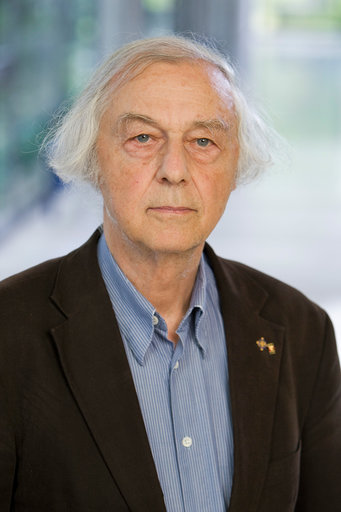Nobel Prize Laureate Robert Huber turns 80

Born in Munich on 20 February 1937, Robert Huber grew up during the war years: A difficult time during which schools were few, and the daily struggle for bread and milk took precedence. On his own initiative and with the help of his family, he learned to read and write, and in 1947 he attended one of the few grammar schools in the vicinity of his parents’ home. The curriculum of the time made sparse provision for Huber’s passion, chemistry. The few lessons offered were not enough to satisfy the enthusiastic youngster. Thus, in his spare time he devoured every book on chemistry that he could find. However this also caused trouble: A pupil who knew more than his teacher - and let him know it - was regarded as rebellious.
Scholarships enabled him, despite the financial difficulties faced by his parents, to study chemistry and complete his doctorate at the Technical University Munich (TUM). His passion for structural research was a product of his love for the mountains. While hiking in the Alps he collected minerals; their symmetry, their clear structures and their origins fascinated him. So he set about finding a professor who was at the forefront in crystallography, and came upon Professor Walter Hoppe at Munich’s Technische Hochschule (today’s TUM). By today’s standards, structural research at the time was laborious. The methods were lacking and had first to be developed. According to Huber, “the possibilities today are simply fantastic. The attraction was different in those days. I had the opportunity to develop new methods.”
In 1968 he established his own small working group at the then MPI for Protein and Leather Research (a predecessor of the present MPI of Biochemistry) with which he successfully resolved many more protein structures. First among them was the insect protein erythrocruorin.This discovery earned him two invitations to join renowned research institutions. First came an appointment proposal from the University of Basel, which he almost accepted. However, when the offer came to join the then MPI of Biochemistry, he found little difficulty in remaining where he felt at home. “I was delighted with the appointment. Munich is a splendid city, and the MPI of Biochemistry is an excellent research location.” Since 1972 he has been a Scientific Member of the Max Planck Society and Director at the Max Planck Institute of Biochemistry. In addition to guest professorships, for example at the University of Duisburg-Essen and Cardiff University, since 1976 he has also held a chair at the TUM.
Contact with his staff and doctoral students has always been very important to him. “It fills me with pride to see how former doctoral students and postdocs have made a successful career for themselves.” To this day he maintains a lively debate with many of his colleagues, and tinkers with new ideas. Continuing his research is always close to his heart. “Proteins are nice, crystals are nicer," says Huber. “My fascination for protein structures and crystallography has never waned.” Meanwhile, he is also co-founder of two start-up companies in Martinsried, which utilize knowledge of the structure of proteins to develop drugs, for example to treat autoimmune diseases. His latest project sees him playing a part in the Lead Discovery Center in Dortmund, an initiative undertaken by the technology-transfer company Max Planck Innovation. The goal is to make better use of the potential offered by excellent basic research in the search for new treatments for diseases. “I find it good to have both feet firmly in touch with reality, and carry on with my research. I have a strong desire to play a part in the development of new drugs.” Robert Huber intends to celebrate his birthday quietly in the company of his family. [Sas]
